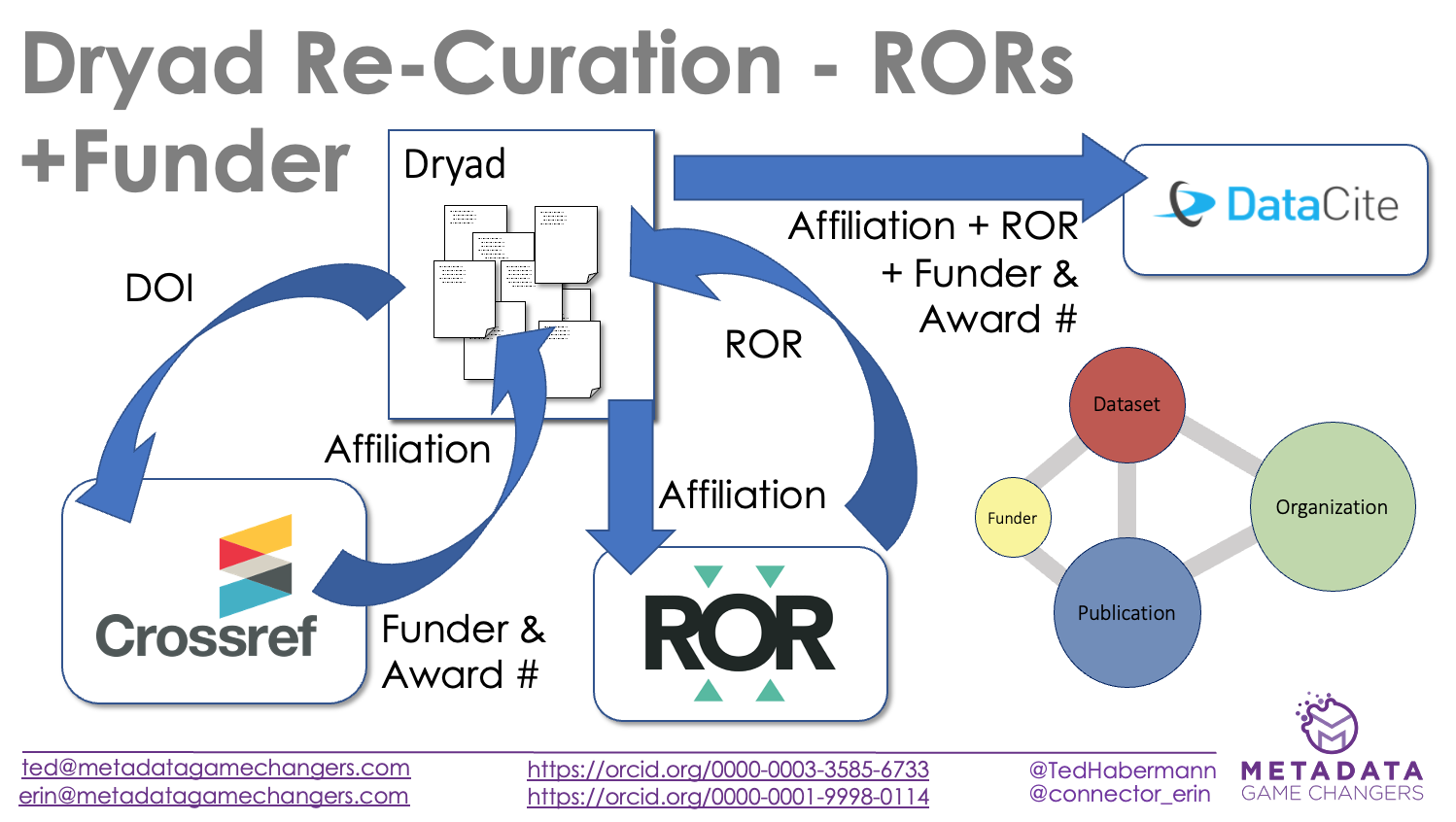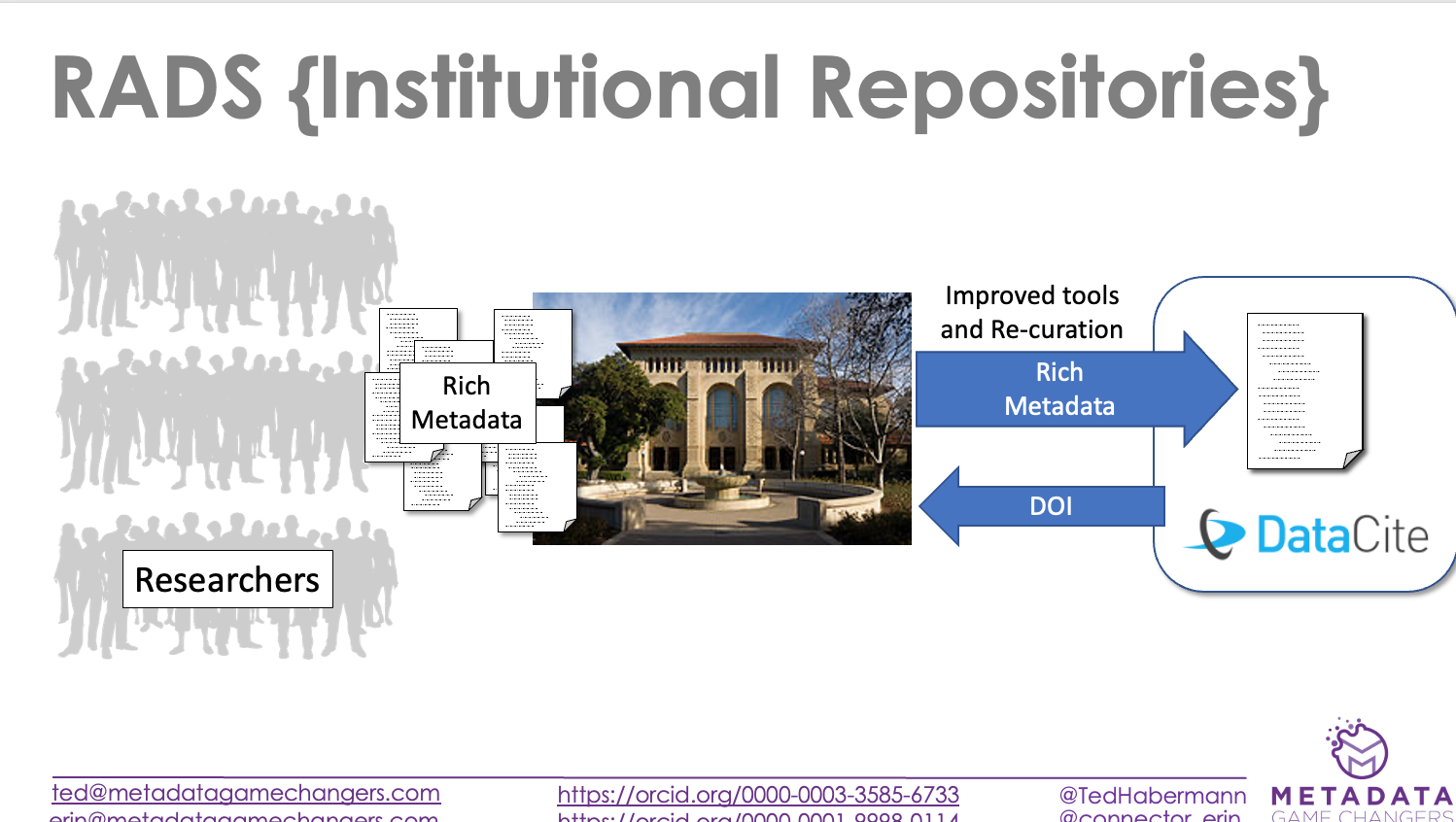Responding to the Nelson Memo: Repository Re-Curation for Open Science
/Cite this blog as Habermann, T. (2023). Responding to the Nelson Memo: Repository Re-Curation for Open Science. Front Matter. https://doi.org/10.59350/vb0h7-be823
Introduction
During August 2022 the White House Office of Science and Technology Policy (OSTP) released a memo (generally known as the Nelson Memo) describing guidelines for “ensuring free, immediate, and equitable access to federally funded research”. The memo included guidelines for metadata which stated that federal agencies should:
“Collect and make publicly available appropriate metadata associated with scholarly publications and data resulting from federally funded research, to the extent possible at the time of deposit in a public access repository. Such metadata should include at minimum: i) all author and co-author names, affiliations, and sources of funding, referencing digital persistent identifiers,16 as appropriate; ii) the date of publication; and, iii) a unique digital persistent identifier for the research output;”
Existing metadata in many repositories were created and curated before these identifiers existed and, therefore, do not include these identifiers. To comply with the Nelson memo guidelines, these identifiers must be found, if possible, and added to the metadata. In other words, the metadata must be curated again, or re-curated, to include this new content and made publicly available.
Re-Curation means “Curate again”. The process adds new content to repository metadata to improve the metadata in several ways. It can be used in situations where existing metadata and users can benefit from new content. in this talk we focus primarily on adding various kinds of identifiers to metadata to improve compliance with the Nelson memo and connectivity for the described resources.
Metadata Game Changers has been exploring re-curation capabilities with many repositories for several years, developing and implementing tools and processes to find identifiers of many kinds, improving metadata, and sharing the improved metadata in the global research infrastructure. A recent talk describes three examples:
Dryad Data Repository
Two phases of re-curation added 1) author affiliations and organizational identifiers (RORs) and 2) funder identifiers and award numbers.
Two kinds of re-curation have been done in the dryad data repository: 1) adding affiliations and rors for authors and 2) adding funder names, identifiers, and award numbers. In both cases, elements of the global research infrastructure were used as sources for this metadata and all improvements were added to datacite metadata to allow connections in the datacite commons.
Institutional Repositories
We improved the DataCite metadata submission process to include rich metadata collected directly from researchers by data managers and librarians in institutional repositories.
institutional repositories work hard with researchers to create rich metadata during the intial curation of datasets and other research objects being submitted to the repository. many times This initial step includes submitting minimum metadata to datacite to get a doi. we explored improved submission tools for re-curation of the datacite metadata to add all of the existing rich metadata from the institutional repositories to datacite.
Field Stations and Facilities
We added RORs to uniquely identify field stations, migrated research applications to DataCite with DOIs and connected may organizations, people, journal articles, samples and data management plans to the DataCite metadata.
Slides are available in Zenodo and a video of the talk is available below.




